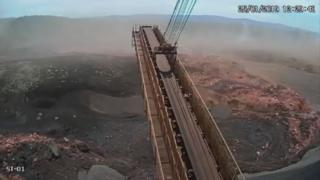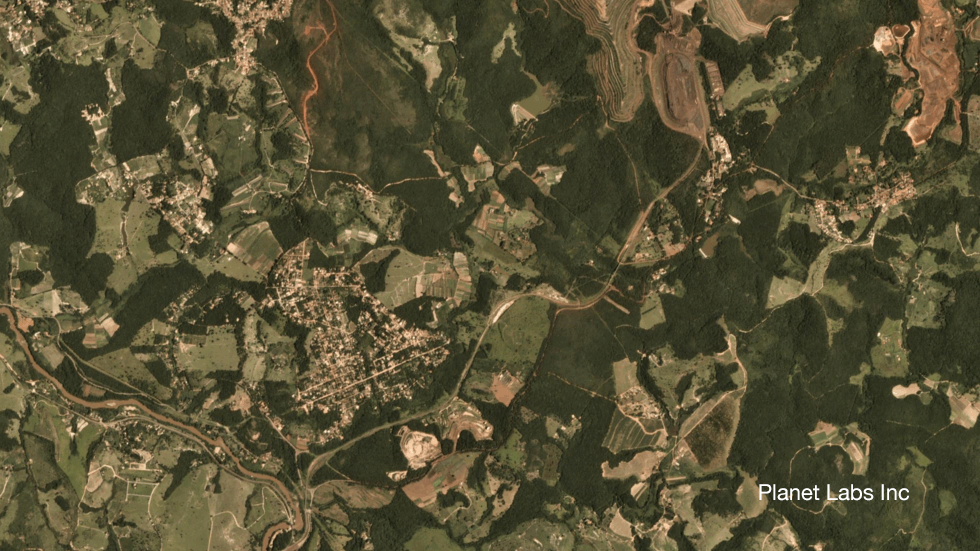 Image copyright
TV Bandeirantes
Image copyright
TV Bandeirantes
Dramatic pictures have emerged of the collapse of an iron ore mine owned by the Vale company in southern Brazil.
The images, obtained by the TV Bandeirantes station show the moment a muddy sludge engulfed the company canteen and neighbouring buildings in Brumadinho, Minas Gerais.
An investigation is taking place into the collapse, which has left more than 300 people dead or missing.
This is the second incident involving Vale in three years.
Five people have been arrested as part of the investigation. Prosecutors in Brazil say three were Vale officials, whose responsibilities included dealing with environmental impact licences.
Vale, the world's biggest producer of iron ore and nickel, said it was co-operating with prosecutors.
A state official told Reuters that all evidence suggests the dam burst was caused by liquefaction - a process by which a solid material such as sand loses strength and turns to liquid.
The BBC's Julia Carneiro says liquefaction was the cause of a separate dam collapse three years ago in Mariana, owned by a Vale subsidiary. Both structures are upstream dams, mostly built with dried mining waste or tailings, a mixture of sand and clay-like mud.
Vale says the cause of the collapse is being investigated and that instruments used to measure dam pressure had not detected any problems.
As hopes of finding anyone alive dwindle, thoughts are now turning to how to deal with the 12 million cubic metres of mud that was released.
The UN's Special Rapporteur on Toxics, Baskut Tuncak, has called for an inquiry into the toxicity of the waste and urged the Brazilian government to take immediate precautionary measures.

